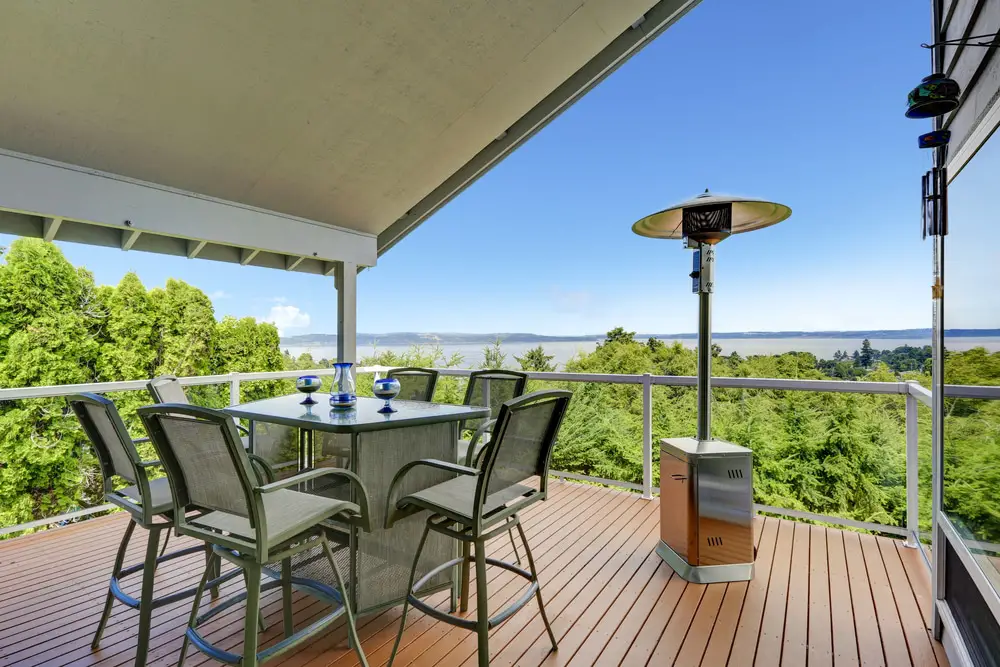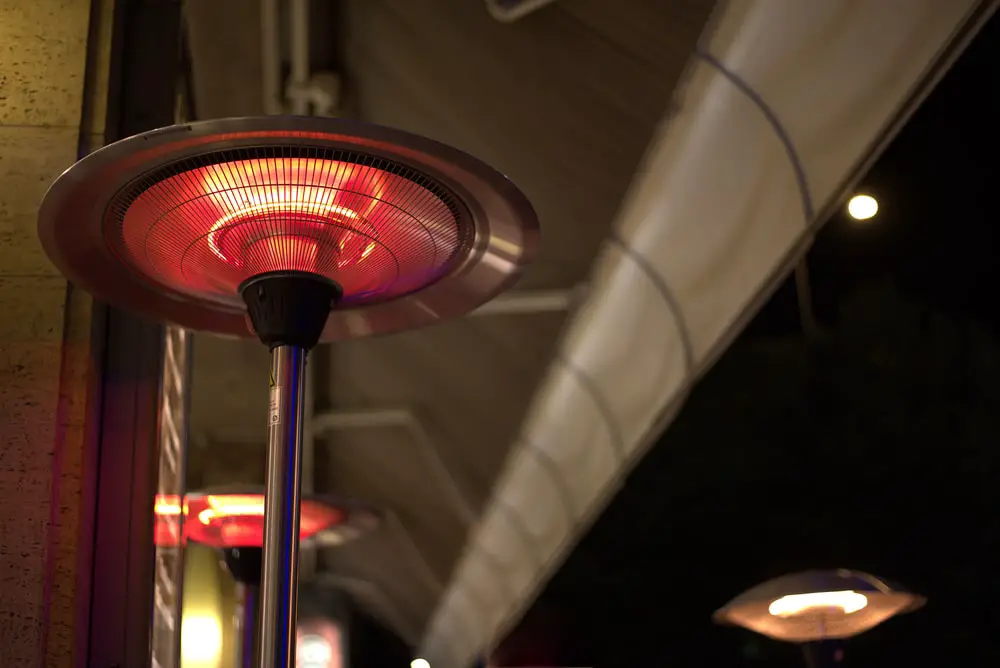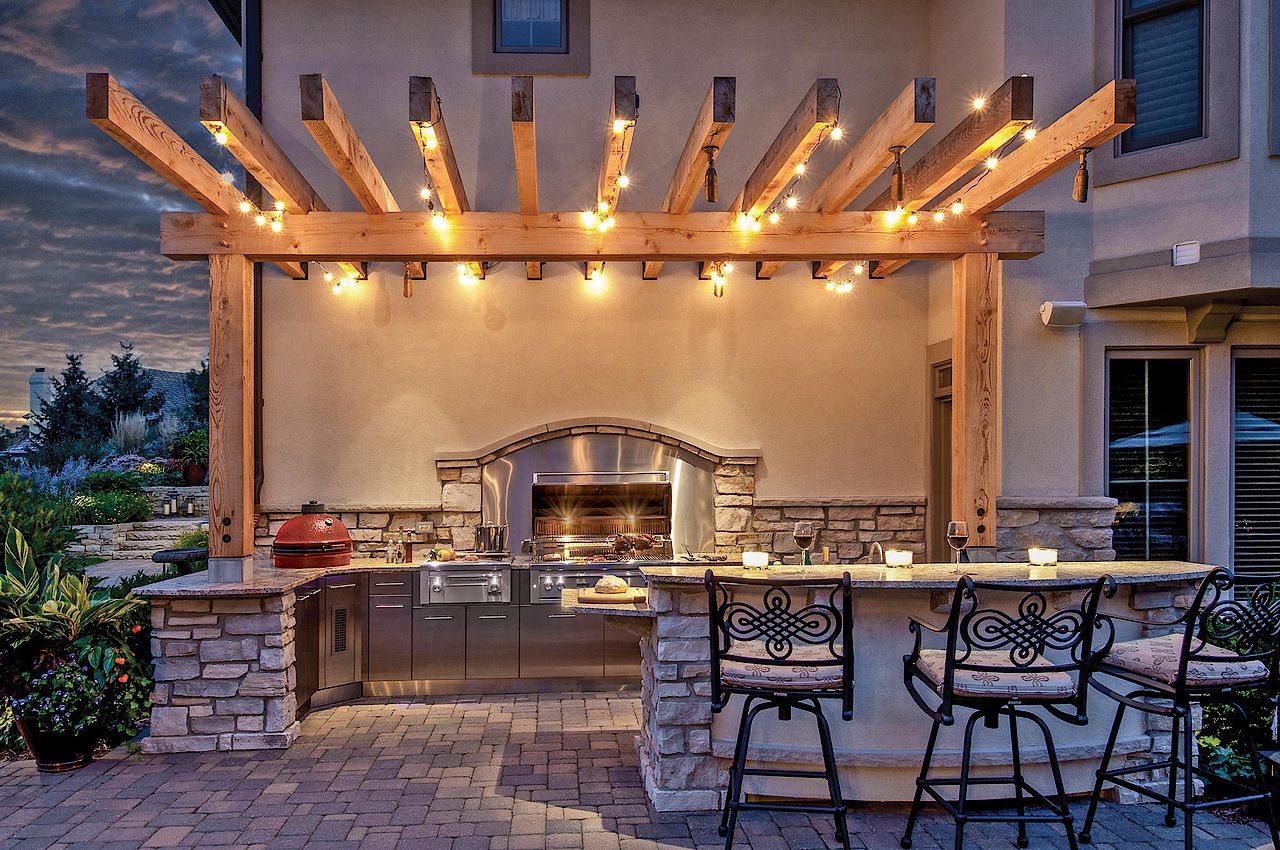How To Light A Patio Heater
Introduction
How To Light A Patio Heater: Having a patio heater can greatly enhance your outdoor living space, allowing you to enjoy your patio or deck even during the cooler months. However, in order to fully enjoy the warmth and comfort that a patio heater provides, it is essential to know how to properly light and operate it. In this article, we will guide you through the step-by-step process of lighting a patio heater, ensuring that you can effortlessly create a cozy and inviting atmosphere in your outdoor area.
First and foremost, it is important to familiarize yourself with the different types of fix patio heaters available on the market. The most common types include propane, natural gas, and electric patio heaters. Each type has its own unique features and requirements, so it is crucial to choose the one that best suits your needs and preferences.
Once you have selected the type of patio heater that is right for you, it is time to learn how to properly light it. For propane patio heaters, the first step is to ensure that the propane tank is securely connected and turned on. Next, locate the ignition switch or knob, which is typically located near the control panel. Turn the switch or knob to the “”ignite”” or “”start”” position, and then press the ignition button or push the knob in to release the gas and create a spark. If the patio heater has a pilot light, you may need to hold down the pilot button for a few seconds to allow the gas to flow and ignite.

Why is the gas not flowing in my patio heater?
This can occur when changing tanks or during the initial start up of a new heater. Reset the regulator to allow gas to flow back into the patio heater burner. To reset the regulator, turn the heater off and disconnect the regulator from the tank. Wait for 30 seconds and reconnect the hose and regulator to the tank.
There can be several reasons why the gas is not flowing in your patio heater. It is important to identify the cause of the problem in order to fix it and ensure that your patio heater is working properly. In this article, we will discuss some common reasons why the gas may not be flowing in your patio heater and provide possible solutions.
One possible reason for the gas not flowing in your patio heater is a problem with the gas supply. Check if the gas tank is empty or if the gas valve is closed. If the tank is empty, you will need to refill it. If the gas valve is closed, simply open it to allow the gas to flow. It is also important to check if the gas hose is properly connected to the tank and the patio heater. If it is loose or damaged, it may be preventing the gas from flowing.
Another possible reason for the gas not flowing in your patio heater is a clogged or blocked gas line. Over time, dirt, debris, or insects can accumulate in the gas line and obstruct the flow of gas. To fix this issue, you can try cleaning the gas line using a pipe cleaner or compressed air. Make sure to turn off the gas supply and disconnect the gas line before attempting to clean it. If the gas line is severely clogged, it may need to be replaced.
Do all patio heaters have a pilot light?
Patio heaters can have one of the two types of ignition, pilot or non-pilot. Non-pilot ignition heaters can only be manually lit. If you’re not sure what type of ignition your patio heater has, refer to the owner’s manual. Likewise, you can also check to see if there’s an ignition button or not.
When it comes to patio heaters, there are various types and models available in the market. One common question that often arises is whether all patio heaters have a pilot light. The answer to this question is not a simple yes or no, as it depends on the specific type and model of the patio heater.
Traditional patio heaters, such as those powered by propane or natural gas, typically have a pilot light. The pilot light is a small flame that is constantly burning and is used to ignite the main burner when the heater is turned on. This pilot light ensures that the heater can be easily and quickly started, without the need for any additional ignition source.
However, not all patio heaters have a pilot light. In recent years, there have been advancements in patio heater technology, leading to the development of new types of heaters. Some of these newer models, such as electric patio heaters, do not require a pilot light. Instead, they use an electric ignition system to start the heater. This eliminates the need for a constant flame and makes these heaters more energy-efficient.
Can you use a lighter to light propane heater?
Never use your propane heater in a small space. To light the propane heater, all you need is a propane tank and matches or a lighter. Switching it off when you’re finished is easy; just make sure you store it away properly to prevent damage.
Yes, you can use a lighter to light a propane heater. Propane heaters are a popular choice for providing warmth in outdoor spaces, such as patios or camping areas. They are fueled by propane gas, which is highly flammable and requires an ignition source to start the heating process. While propane heaters often come with built-in ignition systems, such as piezo igniters or electronic ignition, a lighter can be used as an alternative method to light the heater.
Using a lighter to light a propane heater is a straightforward process. First, ensure that the propane tank is securely connected to the heater and that all valves are in the off position. Next, locate the pilot light or ignition area on the heater. This is typically a small opening or button where the propane gas is released. Before igniting the heater, it is important to read the manufacturer’s instructions and safety guidelines to ensure proper usage.
Once you have familiarized yourself with the heater’s instructions, you can proceed to light the propane heater with a lighter. Hold the lighter near the pilot light or ignition area and slowly turn the valve to the pilot position. This will allow a small amount of propane gas to flow. While holding the lighter, press the ignition button or use the lighter’s flame to ignite the gas. If successful, the pilot light should ignite, and you can release the ignition button or lighter.
Do you plug in patio heaters?
Electric patio heaters can either be hardwired or plugged directly into a standard outlet. This means that they can be portable, like propane heaters, or fixed in a specific location, like natural gas heaters.
Do you plug in patio heaters?
Yes, patio heaters are typically plugged into an electrical outlet for power. These heaters are designed to provide warmth and comfort in outdoor spaces, such as patios, decks, or gardens. They are a popular choice for homeowners who want to extend their outdoor living season or create a cozy atmosphere for outdoor gatherings.
Plugging in a patio heater is a simple and convenient way to power it up. Most patio heaters come with a power cord that can be plugged into a standard electrical outlet. This eliminates the need for any complicated installation or setup process. All you have to do is find a suitable location for your patio heater, plug it in, and turn it on.
It is important to ensure that the electrical outlet you are using is compatible with the patio heater’s power requirements. Most patio heaters operate on standard household voltage, typically 120 volts. However, some larger or more powerful heaters may require a higher voltage, such as 240 volts. Make sure to check the manufacturer’s specifications and guidelines to determine the appropriate power source for your patio heater.
When plugging in a patio heater, it is also important to consider the location of the electrical outlet. The outlet should be easily accessible and located in close proximity to the heater. This will prevent any tripping hazards or the need for long extension cords. Additionally, it is recommended to use a grounded outlet and avoid using any adapters or extension cords that may compromise the safety and performance of the heater.
Why is my propane heater not igniting?
If your propane heater sparks but will not light, the gas cylinder that supplies it may be empty or the gas may even be shut off. Check to be sure, and if there is still a problem carefully clean the gas valve using a needle.
Why is my propane heater not igniting?
There can be several reasons why your propane heater is not igniting. It is important to troubleshoot the issue to determine the cause and find a solution. Ignition problems can be frustrating, especially during the colder months when you rely on your heater for warmth. Here are some possible reasons why your propane heater is not igniting.
1. Lack of fuel: One of the most common reasons for a propane heater not igniting is a lack of fuel. Check the propane tank to ensure it is not empty or low on fuel. If the tank is empty, you will need to refill it. If it is low on fuel, consider replacing the tank or refilling it to ensure a sufficient supply of propane.
2. Faulty ignition switch: Another possible reason for the ignition problem is a faulty ignition switch. The ignition switch is responsible for creating a spark to ignite the propane. If the switch is faulty or damaged, it may not be able to generate the spark needed for ignition. In this case, you may need to replace the ignition switch.
3. Clogged burner or pilot tube: A clogged burner or pilot tube can also prevent your propane heater from igniting. Over time, debris and dirt can accumulate in the burner or pilot tube, obstructing the flow of propane and preventing ignition. Cleaning the burner or pilot tube with a brush or compressed air can help remove any obstructions and restore proper ignition.
Properly lighting a patio heater is essential for safe and efficient operation. Here are the steps to follow
Step 1: Before lighting the patio heater, ensure that it is placed on a stable and level surface away from any flammable materials. This will help prevent accidents and ensure the heater functions properly.
Step 2: Check the fuel supply. If you are using a propane patio heater, make sure the propane tank is securely connected and has enough fuel. For natural gas patio heaters, ensure the gas line is properly connected and the gas supply is turned on.
Step 3: Locate the ignition switch or control knob. This is usually found near the base of the patio heater. Turn the switch or knob to the “”Pilot”” position.
Step 4: Press and hold the ignition button or control knob while simultaneously pressing the piezo igniter button. This will create a spark that ignites the pilot flame.
Step 5: Once the pilot flame is lit, continue holding the ignition button or control knob for about 30 seconds to allow the thermocouple to heat up. The thermocouple is a safety device that detects the presence of a flame.
Are there any safety precautions to consider when lighting a patio heater?
When lighting a patio heater, it is important to take certain safety precautions to ensure the well-being of yourself and others. First and foremost, always read and follow the manufacturer’s instructions and guidelines for your specific patio heater model. These instructions will provide valuable information on how to safely operate and light the heater.
Before lighting the patio heater, make sure that the area around it is clear of any flammable materials such as leaves, paper, or furniture. It is also crucial to ensure that the heater is placed on a stable and level surface to prevent any accidents or tipping over. Additionally, keep a safe distance between the patio heater and any combustible objects, such as curtains or overhanging branches.
When lighting the patio heater, it is recommended to use a long-reach lighter or a fireplace match to prevent any potential burns. Avoid using regular matches or lighters as they may not provide enough distance between your hand and the flame. Once the heater is lit, never leave it unattended and always keep an eye on it to prevent any accidents or fire hazards. Lastly, it is important to have a fire extinguisher nearby in case of emergencies.
What type of fuel is typically used for patio heaters?
Typically, patio heaters use either propane or natural gas as fuel. Propane is a popular choice because it is readily available and easy to use. It comes in portable tanks that can be easily connected to the heater. Propane patio heaters are also convenient because they can be moved around the patio or outdoor space as needed. Natural gas, on the other hand, is a more permanent option. It requires a dedicated gas line to be installed, which can be more expensive and time-consuming. However, once the gas line is in place, natural gas patio heaters provide a continuous fuel source without the need for refilling tanks.
Propane and natural gas are both clean-burning fuels that produce efficient heat for outdoor spaces. They are also relatively safe to use, as long as proper precautions are taken. It is important to follow the manufacturer’s instructions and guidelines for fuel usage and storage. Additionally, it is recommended to keep a spare tank of propane on hand in case the current tank runs out during use. Regular maintenance and inspections of the patio heater and fuel connections are also important to ensure safe and efficient operation.
Are there any specific tools or equipment needed to light a patio heater?
Yes, there are a few specific tools and equipment that are typically needed to properly light a patio heater. The first and most important tool is a long-reach lighter or a fireplace match. These tools are necessary because they allow you to safely ignite the pilot light without having to reach into the heater’s burner area. It is important to use a long-reach lighter or a fireplace match to prevent any potential accidents or injuries.
In addition to a long-reach lighter or a fireplace match, you may also need a screwdriver or an adjustable wrench. These tools are typically used to access and adjust the gas control valve, which is responsible for regulating the flow of gas to the burner. It is important to have these tools on hand in case you need to make any adjustments or repairs to the gas control valve.
5. Can you provide any troubleshooting tips for common issues when lighting a patio heater?
When it comes to lighting a patio heater, there can be a few common issues that may arise. One of the most common problems is a pilot light that won’t stay lit. If you’re experiencing this issue, the first thing you should check is the gas supply. Make sure the gas valve is fully open and that there is enough fuel in the tank. If the gas supply is not the issue, you may need to clean the pilot assembly. Use a small wire brush to remove any debris or buildup that may be preventing the pilot light from staying lit.
Another common issue is a patio heater that won’t ignite. If you’re having trouble getting your patio heater to ignite, the first thing you should check is the igniter. Make sure it is properly connected and in good working condition. If the igniter is working properly, but the heater still won’t ignite, you may need to clean the burner ports. Use a small brush or toothpick to remove any debris that may be blocking the ports. Additionally, check the fuel supply and make sure there is enough fuel in the tank.

Conclusion
Lighting a patio heater is a simple process that can be done by following a few easy steps. Whether you are using a propane or natural gas patio heater, the process is relatively the same. By taking the time to properly light your patio heater, you can ensure that it will provide you with warmth and comfort during those chilly evenings.
The first step in lighting a patio heater is to make sure that the gas supply is turned off. This is an important safety precaution that should not be overlooked. Next, you will need to locate the ignition switch or button on your patio heater. This is typically located near the control panel or on the side of the heater. Once you have located the ignition switch, you can proceed to the next step.
Before attempting to light the patio heater, it is important to check for any obstructions or debris in the burner or pilot assembly. This can be done by carefully inspecting the area and removing any debris that may be present. Once the area is clear, you can proceed to the next step.
To light the patio heater, you will need to turn the gas supply on and then press and hold the ignition switch or button. This will release a small amount of gas into the burner or pilot assembly. While continuing to hold the ignition switch or button, you will need to use a long-reach lighter or match to ignite the gas. Once the gas is ignited, you can release the ignition switch or button and adjust the heat settings to your desired level.








